It can be tricky to single out which Spanish city to visit, especially for a Fomo-prone, decision-anxious traveller like me. The solution, however, is train-shaped; after all, why visit just one city when the slick, civilised long-distance railway network makes it easy to tick off a south-western trifecta?
A Brit abroad can only marvel at Spanish stations’ orderly boarding process, complete with airport-style security, reserved seating in spacious carriages (hurrah for tray tables that comfortably accommodate a laptop, for once) and affordable pricing (an advance ticket for the 3.5hr Madrid-Granada service can cost as little as £15).
Not only is this an eco-friendlier option than road tripping, it’s also less stressful for anyone who finds foreign hire car encounters tend to end in either near-death experiences or near-divorce (or both). So, all aboard for a culture-packed Spanish sojourn…
SEVILLE
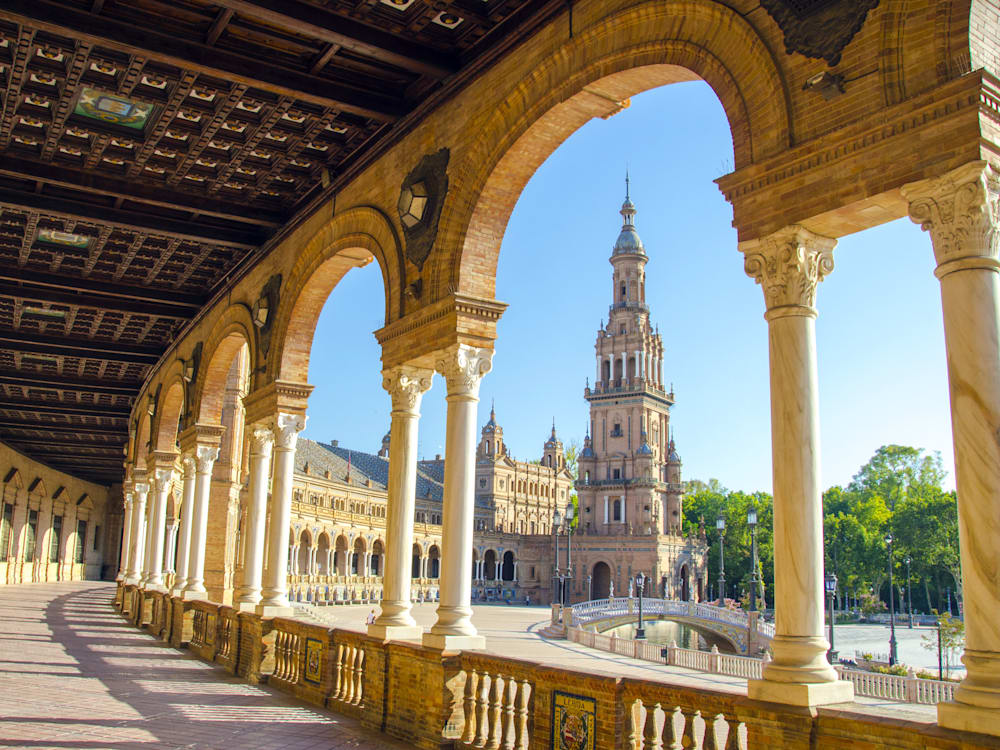
Peacocks strut between the fountains and palm trees in Real Alcázar, the 800-year-old royal residence where ornately carved Islamic courtyards (these doubled as Dorne in Game of Thrones) meet frescoed Baroque halls. Seville’s chapters under Muslim and Catholic rule can also be glimpsed at the nearby Cathedral, the minaret of Almohad mosque still towering beside the monumental Gothic basilica.
But not all Seville’s sights date back centuries; Las Setas (meaning mushrooms) is the world’s biggest timber structure and offers soaring alfresco walkways from which to survey the cityscape. Crossing the river to the down-to-earth barrio of Triana, meanwhile, monumental squares give way to winding lanes lined with ceramic workshops and flamenco bars, plus the Mercado de Abastos food market.
EAT
A few anchovies and sherries here, some snails and Iberico ham there – bar hopping is the perfect way to spend those balmy Andalusian evenings and sample Sevillian tapas culture. Our favourite old-school spots include Bar Alfafa, Abacería Los Carros (Pl. Monte Sión) and La Fresquita (C. Mateos Gago 29), a bolthole stuffed with religious icons and wafting incense, only steps from the Cathedral.
When you’re maxed out on tapas, Nobu Sevilla on scenic Plaza San Francisco provides something completely different: Japanese-Peruvian fine-dining with a subtly Spanish slant. Alongside Chef Nobu’s signature dishes like miso black cod, there are tacos with tuna tomato salsa and miso Padrón peppers, all paired with top-shelf sakes. For your morning caffeine fix, make a beeline to Borbotea Coffee Lab, then cool off in the afternoon with a mouth-watering ice-cream from Giolatto.
STAY
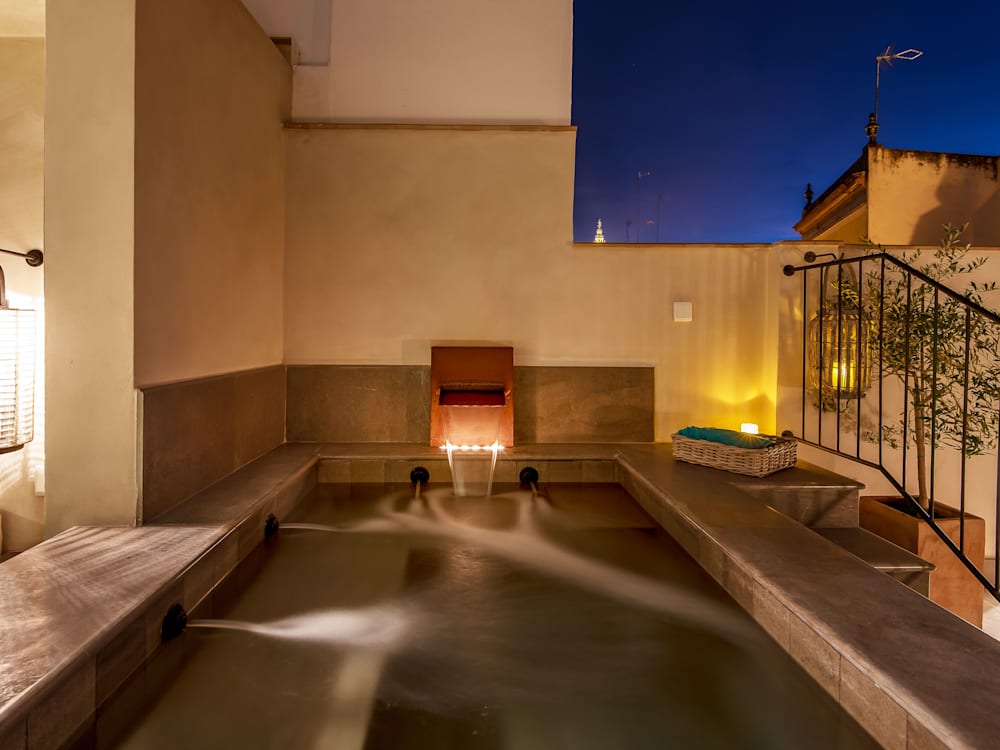
Historic mansions transformed into boutique hotels – if that’s your type of stay, Seville spoils for choice. Corral del Rey unfurls across a couple of storied, buildings, the stone walls and wood-beamed ceilings oozing atmosphere, while a plunge pool with panoramic views awaits upstairs.
Splash out on a Deluxe Pool Terrace Suite for your own rooftop idyll and freestanding tub. Another casa palacio given a fresh lease of life is Gravina 51. Elegant rooms stocked with L’Occitane amenities and Nespresso machines are arranged around a peaceful courtyard – all jungly plants and water features – topped off with one of the city’s swishest rooftop bars. Belying the quiet side-street location, Seville’s regal sites are only a few minutes’ stroll away.
TOP TIP
For a free-of-charge nightly flamenco show, squeeze onto a bench at La Carboneria, order una caña and watch the performers stamp and twirl beneath the coloured lights.
GRANADA
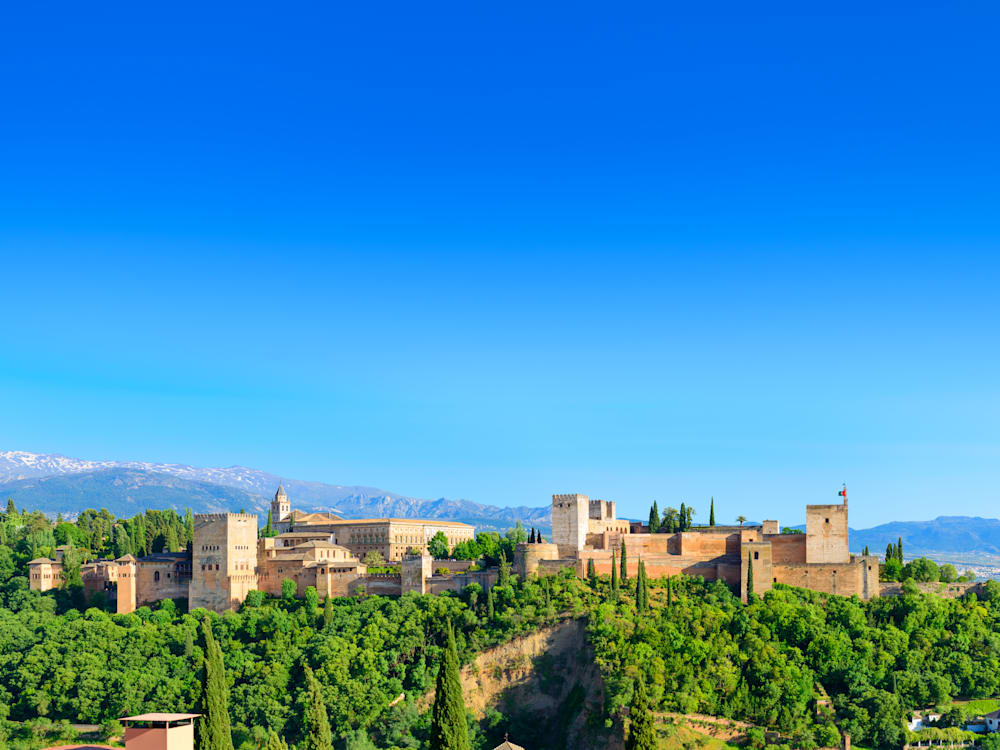
There’s no missing the Alhambra – crowning Granada’s highest hill, the Unesco-listed ‘red castle’ deserves a full day’s exploration, from marble palace to fortress to jasmine-scented grounds. Booking in advance is essential, and it’s worth downloading the in-app audio guide so you can absorb the citadel’s epic history as you wander around.
The Arabian Nights atmosphere continues in the labyrinthine lanes of Albaicín, a neighbourhood dotted with mosques, hammams and tea shops. At day’s end, head to one of the city’s many miradoros (viewpoints), such as Mirador de la Lola and San Miguel Alto, to admire the Alhambra’s sandstone walls at golden hour and bathed in moonlight.
EAT
Rise and shine with a slab of tostada con tomate and freshly squeezed orange juice at Café 4 Gatos, a pint-sized, backstreet café with warm service and pocket-friendly prices. Meanwhile, specialty coffee shops Bonnevie and La Finca are perfect pitstops for a restorative cortado between sightseeing visits.
As with Granada’s architecture and crafts, a Moorish flavour ripples through local cuisine. Some of the tastiest Med-meets-Moroccan fusion fare can be found at Restaurante Ruta del Azafrán or Om Kalsum (C. Jardines 17).
STAY
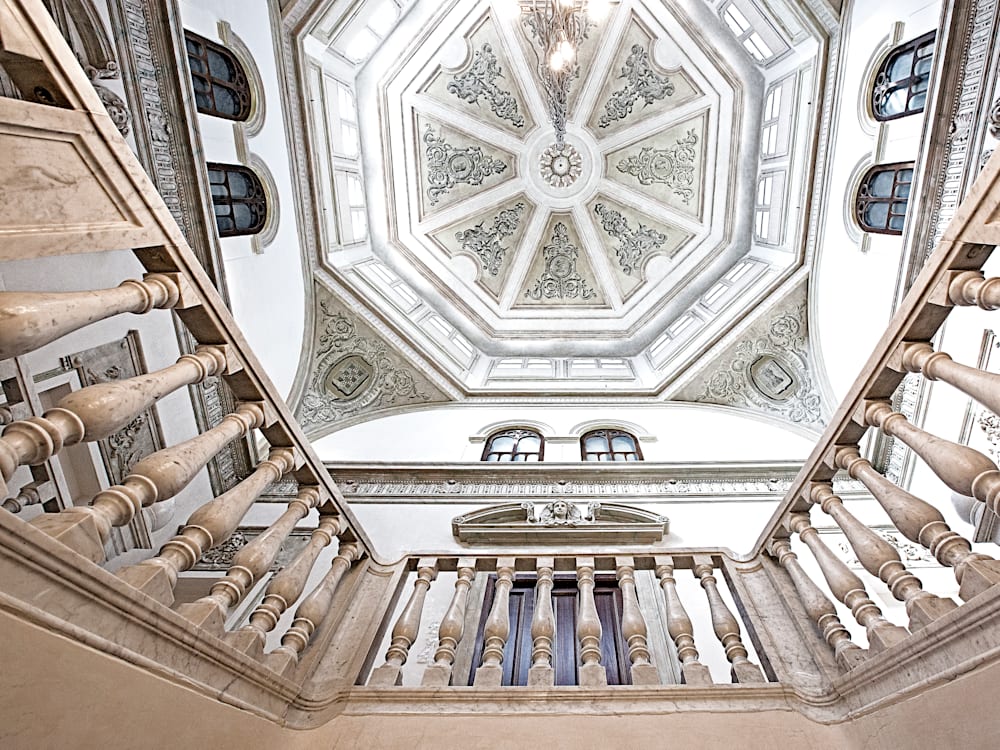
Hospes Palacio de los Patos is stay worthy of a sultan. Close to the cathedral, this design-forward property artfully merges the original Unesco-protected 19th-century palace with a stark, glass-clad contemporary annexe. It’s Granada’s most luxurious address by a long shot (seeing as nobody can overnight at the Alhambra these days).
TOP TIP
Investing in a Granada Card (from €40) will cover entrance to the Alhambra and various other monuments, plus nine urban bus trips to hop between the sites.
MADRID
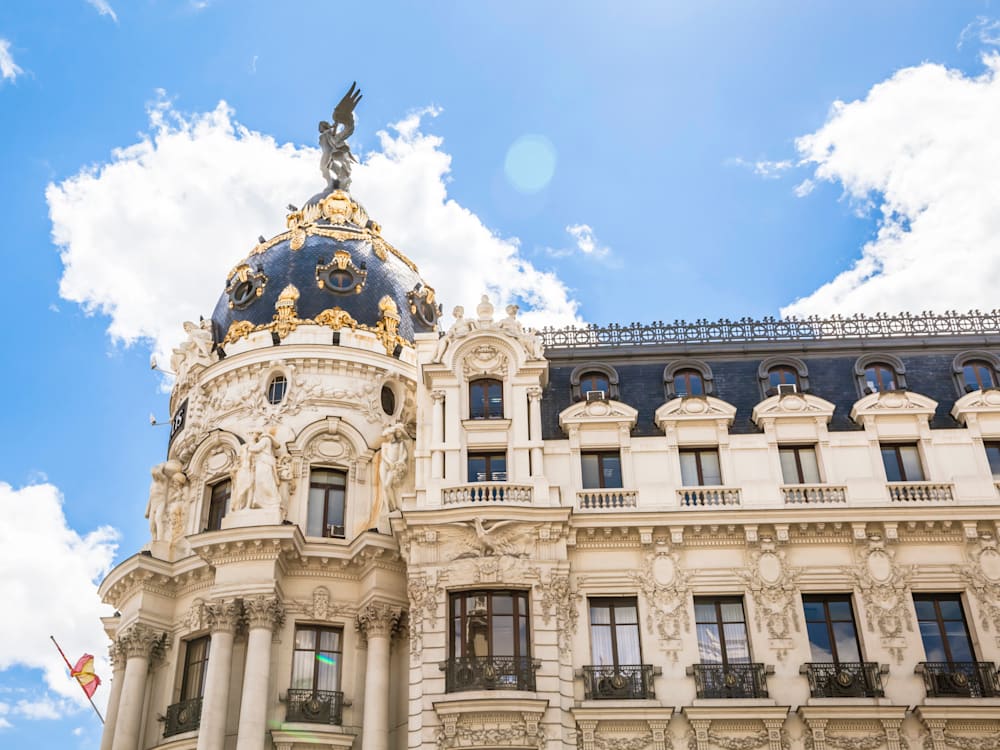
Surely one of Europe’s most underrated capitals, Madrid’s masterpiece-crammed museums, perfectly manicured parks and boutique-lined boulevards are on par with Paris. Its must-see ‘Golden Triangle of Art’ comprises the Prado Museum (focusing on Spanish works, Goya, El Greco and Velasquez top the bill here); Thyssen-Bornemisza (a 1000-strong collection of European art) and Reina Sofia (home to Picasso’s Guernica and other modernist mavericks).
Then soak up some edgier street art and thrift shop cool in Malasaña, the barrio where post-Franco countercultural movement La Movida Madrileña was born. A shout-out also goes to Caixaforum for its quirky temporary exhibitions; the building itself is worth a visit, converted by Swiss starchitects Herzog & de Meuron from a power station to living wall-clad cultural centre.
EAT
Manero en Madrid is a gilded jewel-box of a bar serving gourmet tapas and seafood beside El Retiro park, or follow in Hemingway’s footsteps at 1920s sherry tavern La Venencia (Calle de Echegaray 7). More than a mere food market, Mercado de San Miguel is a century-old institution and atmospheric backdrop in which to sample Spanish produce.
STAY
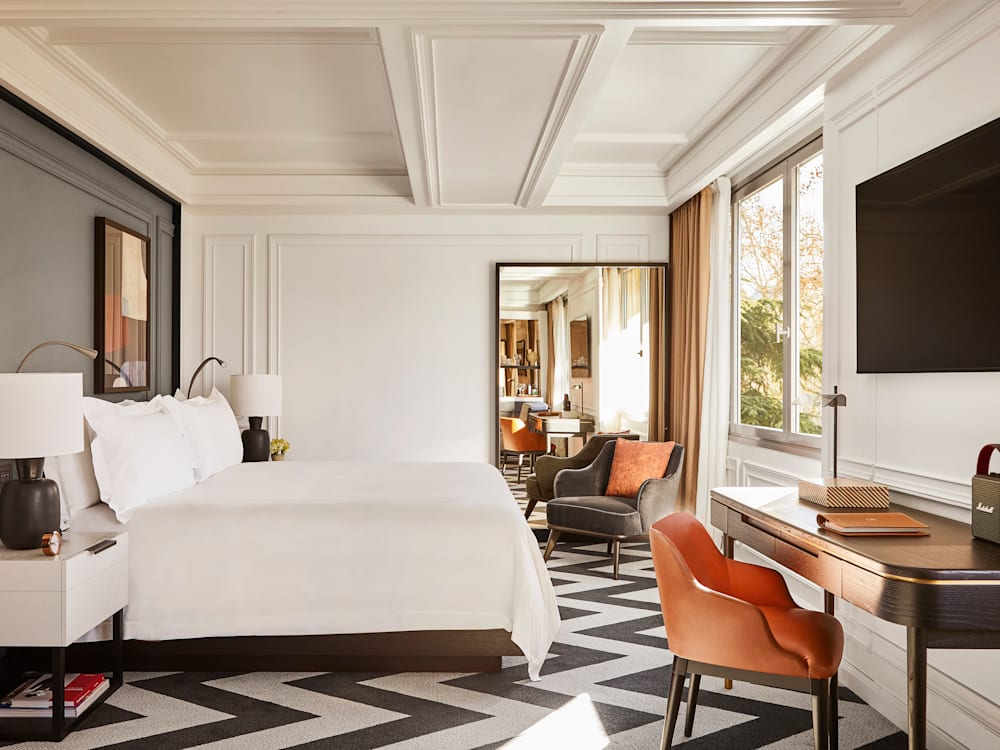
Rosewood Villa Magna will edify art lovers as much as the city’s museums; look out for the Balenciaga-inspired tapestry behind the front desk and Fares Micue’s surreal self-portrait photography.
The monochrome suites provide elegant pieds-à-terre on the grand, tree-shaded thoroughfare of Paseo de Recoletos. Downstairs, the lobby lounge and courtyard bar throng with well-at-heel locals tucking into coffees and pastries by day, or inspired house twists on negronis, G&Ts and martinis after dark. Don’t forget to book into the vast subterranean spa for a spot of steaming, soaking and pampering.
TOP TIP
Got a taste for the tracks? Take a day trip to Toledo, hilltop stomping ground of Mannerist painter El Greco (he of the trippily elongated saints), or Segovia, with its monumental Roman aqueduct and Disney-esque castle. Both cities are only a 30-minute train ride from Madrid.
The line doesn’t stop here: browse our complete collection of Spanish hotels
Estella Shardlow is a freelance travel writer and editor whose work has appeared in The Times, Suitcase, The Telegraph, Food & Travel and more.

